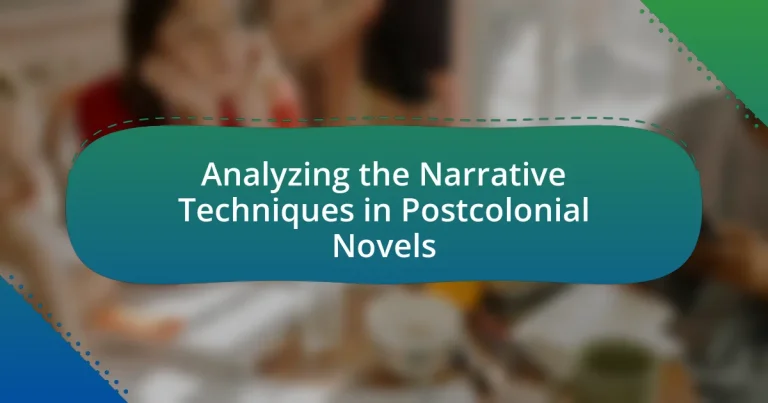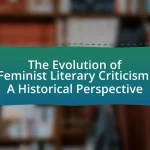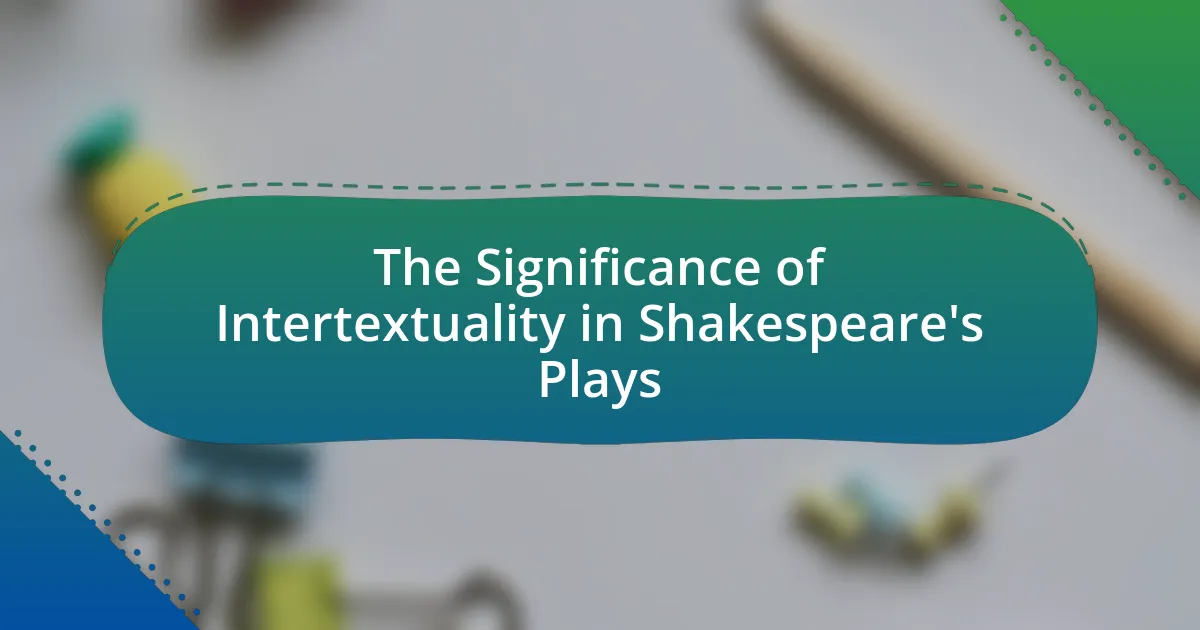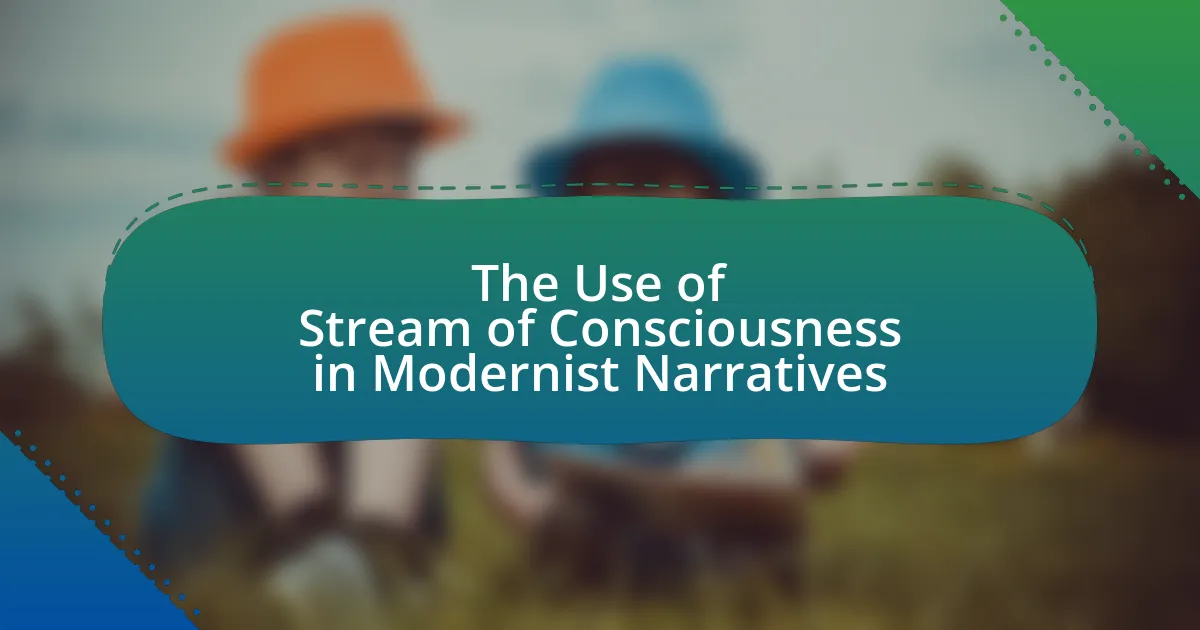The article focuses on analyzing the narrative techniques employed in postcolonial novels, highlighting key methods such as fragmentation, multiple perspectives, and non-linear timelines. These techniques reflect the complexities of identity, cultural conflict, and historical trauma experienced by colonized individuals. The discussion includes how these narrative strategies shape readers’ understanding of postcolonial themes, the significance of voice and perspective, and the role of language in challenging colonial narratives. Additionally, the article examines specific examples from notable works, illustrating how these techniques contribute to the overall impact of postcolonial literature.
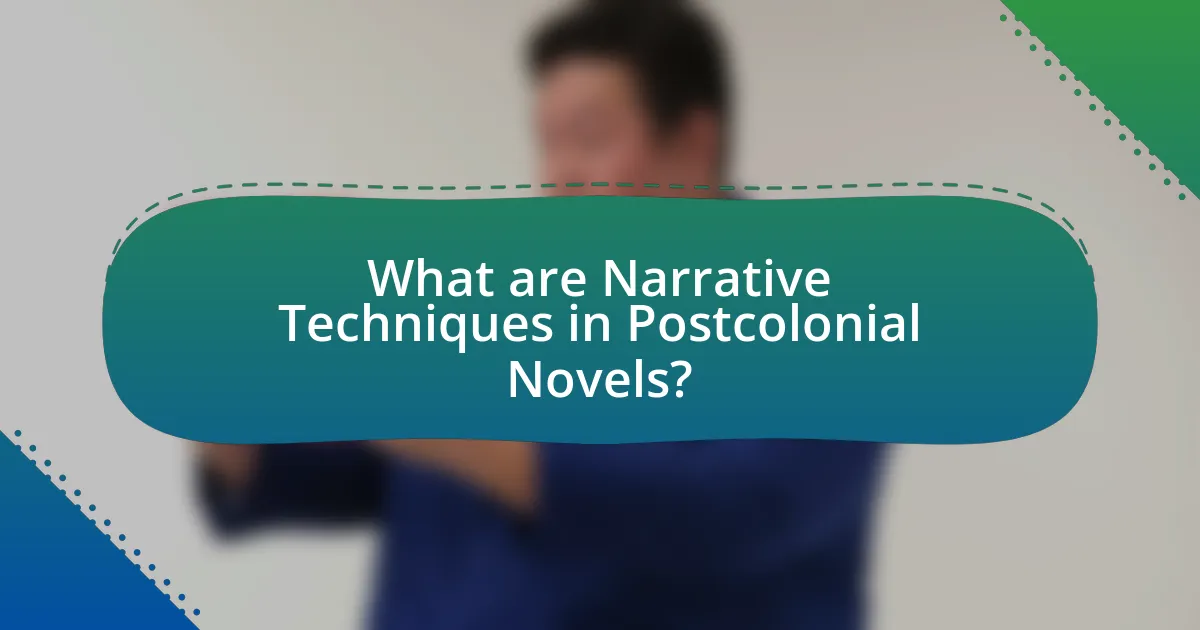
What are Narrative Techniques in Postcolonial Novels?
Narrative techniques in postcolonial novels include fragmentation, multiple perspectives, and the use of non-linear timelines. Fragmentation reflects the disjointed experiences of colonized individuals, often mirroring the disruption caused by colonialism. Multiple perspectives allow for diverse voices and experiences to be represented, challenging dominant narratives and highlighting the complexity of identity. Non-linear timelines disrupt traditional storytelling, emphasizing the cyclical nature of history and memory in postcolonial contexts. These techniques collectively serve to critique colonial legacies and explore themes of identity, belonging, and resistance.
How do narrative techniques shape the reader’s understanding of postcolonial themes?
Narrative techniques shape the reader’s understanding of postcolonial themes by employing strategies such as non-linear storytelling, multiple perspectives, and unreliable narrators. These techniques allow authors to reflect the complexities of identity, cultural conflict, and historical trauma inherent in postcolonial contexts. For instance, non-linear storytelling can illustrate the fragmented nature of postcolonial identities, as seen in works like “Midnight’s Children” by Salman Rushdie, where the narrative structure mirrors the chaotic history of India. Additionally, multiple perspectives can highlight the diverse experiences of colonized individuals, as demonstrated in “Things Fall Apart” by Chinua Achebe, where the protagonist’s viewpoint contrasts with colonial narratives. Unreliable narrators can challenge dominant discourses, prompting readers to question the validity of colonial histories. Collectively, these narrative techniques deepen the reader’s engagement with postcolonial themes, fostering a nuanced understanding of the socio-political landscapes shaped by colonial legacies.
What specific narrative techniques are commonly used in postcolonial literature?
Postcolonial literature commonly employs narrative techniques such as fragmentation, multiple perspectives, and the use of oral traditions. Fragmentation reflects the disjointed experiences of colonized individuals, illustrating the impact of colonialism on identity and culture. Multiple perspectives allow for a diverse representation of voices, often highlighting the complexities of postcolonial societies. The incorporation of oral traditions serves to reclaim indigenous narratives and challenge dominant historical accounts. These techniques are evident in works like “Things Fall Apart” by Chinua Achebe, where the narrative structure emphasizes cultural dislocation and the clash of traditions.
How do these techniques reflect the cultural contexts of postcolonial societies?
Narrative techniques in postcolonial novels reflect the cultural contexts of postcolonial societies by incorporating elements such as non-linear storytelling, code-switching, and the use of indigenous languages. These techniques illustrate the complexities of identity and the fragmentation experienced in societies shaped by colonial histories. For instance, non-linear storytelling mirrors the disrupted timelines and histories of colonized peoples, while code-switching highlights the linguistic diversity and cultural hybridity that arise from colonial encounters. The use of indigenous languages serves to reclaim cultural heritage and assert identity against colonial narratives. Such techniques are evident in works like “Things Fall Apart” by Chinua Achebe, where the narrative structure and language choices emphasize the clash between traditional and colonial cultures, thereby reinforcing the cultural contexts of postcolonial societies.
Why is it important to analyze narrative techniques in postcolonial novels?
Analyzing narrative techniques in postcolonial novels is important because these techniques reveal how authors construct identity, power dynamics, and cultural representation. Postcolonial literature often employs unique narrative strategies, such as non-linear timelines, fragmented storytelling, and multiple perspectives, to challenge colonial narratives and highlight the complexities of postcolonial identities. For instance, authors like Chinua Achebe and Salman Rushdie use these techniques to subvert traditional Western storytelling, thereby offering a more nuanced understanding of their cultures and histories. This analysis not only enhances comprehension of the texts but also fosters critical discussions about the impact of colonialism and the ongoing effects on contemporary societies.
What insights can be gained from understanding these techniques?
Understanding narrative techniques in postcolonial novels provides insights into the complexities of identity, culture, and power dynamics. These techniques often reveal how authors challenge colonial narratives and represent marginalized voices, allowing readers to grasp the multifaceted nature of postcolonial experiences. For instance, the use of non-linear storytelling can illustrate the fragmented identities of characters shaped by colonial histories, as seen in works like “Midnight’s Children” by Salman Rushdie. This approach not only enhances the narrative depth but also encourages critical engagement with historical contexts and cultural intersections, ultimately fostering a deeper understanding of the ongoing impacts of colonialism.
How do narrative techniques contribute to the overall impact of a postcolonial novel?
Narrative techniques significantly enhance the overall impact of a postcolonial novel by shaping the reader’s understanding of cultural identity, power dynamics, and historical context. These techniques, such as non-linear storytelling, multiple perspectives, and the use of vernacular language, allow authors to reflect the complexities of postcolonial experiences. For instance, non-linear narratives can illustrate the fragmented nature of identity in postcolonial societies, while multiple perspectives can highlight the diverse voices and experiences within a colonized culture. The use of vernacular language not only authenticates the narrative but also challenges colonial language dominance, reinforcing cultural resilience. Such techniques collectively deepen the reader’s engagement and provoke critical reflection on the legacies of colonialism, as seen in works like “Things Fall Apart” by Chinua Achebe, where the narrative structure underscores the clash between traditional and colonial values.

What are the Key Characteristics of Postcolonial Narrative Techniques?
Postcolonial narrative techniques are characterized by fragmentation, hybridity, and the use of multiple perspectives. Fragmentation reflects the disjointed nature of identity and history in postcolonial contexts, often employing non-linear storytelling to convey the complexities of cultural dislocation. Hybridity refers to the blending of different cultural elements, showcasing the coexistence of colonial and indigenous narratives, which challenges binary oppositions. The use of multiple perspectives allows for a more nuanced representation of characters and experiences, often incorporating voices that have been marginalized or silenced in traditional narratives. These characteristics are evident in works such as “Midnight’s Children” by Salman Rushdie, where the narrative structure embodies the chaotic history of India post-independence, illustrating the interplay of personal and national identities.
How do voice and perspective influence postcolonial narratives?
Voice and perspective significantly shape postcolonial narratives by determining how stories are told and whose experiences are highlighted. The use of multiple voices allows for a more nuanced representation of colonized societies, often challenging dominant narratives imposed by colonial powers. For instance, authors like Chinua Achebe in “Things Fall Apart” employ indigenous perspectives to reclaim cultural identity and critique colonialism. This approach not only provides authenticity but also empowers marginalized voices, illustrating the complexities of postcolonial identity. Furthermore, the narrative perspective—whether first-person, third-person, or collective—affects the reader’s engagement and understanding of the socio-political context, as seen in works like “The God of Small Things” by Arundhati Roy, where the fragmented narrative reflects the disjointed realities of postcolonial life. Thus, voice and perspective are crucial in articulating the struggles and resilience of postcolonial societies.
What role does the first-person perspective play in postcolonial storytelling?
The first-person perspective in postcolonial storytelling serves to provide an intimate and subjective view of the experiences of colonized individuals, allowing for a deeper exploration of identity, trauma, and resistance. This narrative technique enables authors to convey personal histories and cultural nuances that challenge dominant colonial narratives. For instance, in novels like “Things Fall Apart” by Chinua Achebe, the first-person perspective allows readers to engage directly with the protagonist’s thoughts and feelings, illustrating the complexities of cultural conflict and personal agency. This approach not only humanizes the characters but also critiques the broader socio-political context of colonialism, making the narrative more relatable and impactful for readers.
How does the use of multiple perspectives enhance the narrative?
The use of multiple perspectives enhances the narrative by providing a richer, more nuanced understanding of the story and its themes. This technique allows readers to see events and characters from various viewpoints, which can reveal biases, cultural contexts, and emotional depths that a single perspective might overlook. For instance, in postcolonial novels, multiple perspectives often highlight the complexities of identity, power dynamics, and historical narratives, enabling a more comprehensive exploration of colonial and postcolonial experiences. This multiplicity can also create tension and conflict within the narrative, as differing viewpoints challenge each other, thereby enriching the overall storytelling experience.
What is the significance of non-linear storytelling in postcolonial literature?
Non-linear storytelling in postcolonial literature is significant because it reflects the fragmented nature of identity and history in postcolonial societies. This narrative technique allows authors to challenge traditional chronological storytelling, thereby emphasizing the complexities of cultural memory and the multiplicity of perspectives. For instance, novels like “Midnight’s Children” by Salman Rushdie utilize non-linear structures to intertwine personal and national histories, illustrating how individual experiences are shaped by broader socio-political contexts. This approach not only engages readers in a more active interpretation of the text but also highlights the disjointed realities faced by postcolonial subjects, making it a powerful tool for exploring themes of displacement and hybridity.
How does non-linear narrative structure affect the reader’s engagement?
Non-linear narrative structure enhances reader engagement by creating a sense of intrigue and encouraging active participation in piecing together the story. This structure often presents events out of chronological order, which can stimulate curiosity and maintain interest as readers seek to understand the connections between different plot points. Research indicates that non-linear narratives can lead to deeper cognitive processing, as readers must engage more critically with the text to construct meaning. For instance, studies have shown that narratives employing non-linear techniques, such as flashbacks or fragmented timelines, can increase emotional investment and retention of information, as readers become more involved in the narrative’s unfolding.
What examples illustrate the use of non-linear storytelling in postcolonial novels?
Examples of non-linear storytelling in postcolonial novels include “Midnight’s Children” by Salman Rushdie and “The God of Small Things” by Arundhati Roy. In “Midnight’s Children,” the narrative shifts between different time periods and intertwines personal and historical events, reflecting the complexities of India’s postcolonial identity. Similarly, “The God of Small Things” employs a fragmented timeline, revealing the characters’ pasts and their impact on the present, which emphasizes the themes of memory and trauma in a postcolonial context. These techniques illustrate how non-linear storytelling effectively conveys the multifaceted nature of postcolonial experiences.
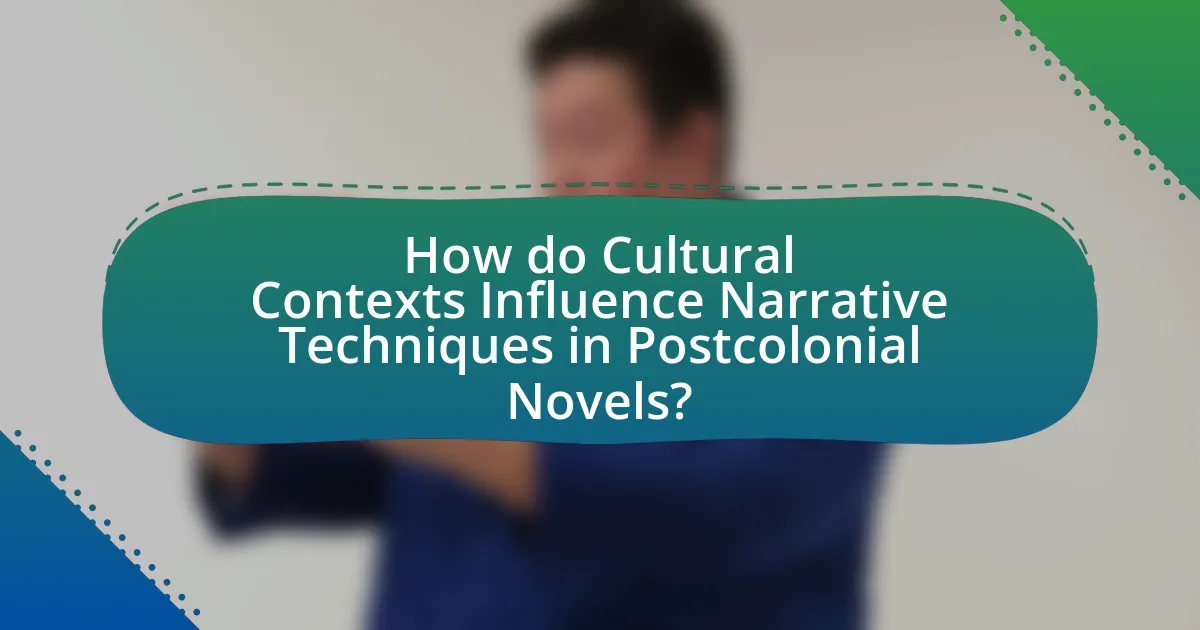
How do Cultural Contexts Influence Narrative Techniques in Postcolonial Novels?
Cultural contexts significantly influence narrative techniques in postcolonial novels by shaping the themes, structures, and perspectives presented in the storytelling. For instance, postcolonial authors often employ non-linear narratives and multiple viewpoints to reflect the fragmented identities and histories of colonized societies. This technique is evident in works like “Midnight’s Children” by Salman Rushdie, where the narrative intertwines personal and national histories, illustrating the complexities of postcolonial identity. Additionally, the use of local languages, dialects, and oral storytelling traditions in novels such as “Things Fall Apart” by Chinua Achebe serves to authenticate cultural experiences and challenge colonial narratives. These narrative choices are rooted in the cultural contexts of the authors, which inform their critiques of colonialism and their explorations of identity, power, and resistance.
What cultural elements are often reflected in the narrative techniques of postcolonial literature?
Cultural elements often reflected in the narrative techniques of postcolonial literature include hybridity, cultural identity, and the use of indigenous languages. Hybridity manifests through the blending of different cultural narratives and forms, showcasing the complexities of identity in postcolonial societies. Cultural identity is explored through characters’ struggles and conflicts, highlighting the impact of colonial history on personal and collective identities. The incorporation of indigenous languages serves to reclaim cultural heritage and challenge colonial narratives, as seen in works like “Things Fall Apart” by Chinua Achebe, where proverbs and local dialects enrich the storytelling and emphasize cultural authenticity.
How does the historical context shape narrative choices in postcolonial novels?
Historical context significantly shapes narrative choices in postcolonial novels by influencing themes, character development, and narrative structure. Postcolonial authors often draw upon the legacies of colonialism, such as cultural dislocation and identity struggles, to inform their storytelling. For instance, novels like Chinua Achebe’s “Things Fall Apart” reflect the impact of British colonial rule on Igbo society, using a non-linear narrative to highlight the disruption of traditional life. This approach allows authors to critique colonial narratives and assert indigenous perspectives, demonstrating how historical events directly inform the choices made in character arcs and plot progression. Additionally, the use of language, such as code-switching between indigenous languages and colonial languages, serves to emphasize cultural hybridity and resistance, further illustrating the profound influence of historical context on narrative techniques in postcolonial literature.
What role does language play in the narrative techniques of postcolonial authors?
Language serves as a crucial tool in the narrative techniques of postcolonial authors, enabling them to express cultural identity and challenge colonial narratives. Postcolonial authors often employ multilingualism, code-switching, and the incorporation of indigenous languages to reflect the complexities of their cultural backgrounds and to assert their voices against colonial dominance. For instance, authors like Chinua Achebe and Salman Rushdie utilize English interspersed with local dialects to create a hybrid narrative style that resonates with their diverse audiences. This technique not only enriches the text but also serves to reclaim and redefine cultural heritage, illustrating the power dynamics of language in postcolonial contexts.
How do postcolonial authors challenge traditional narrative forms?
Postcolonial authors challenge traditional narrative forms by employing non-linear storytelling, fragmented structures, and multiple perspectives. These techniques disrupt the conventional chronological flow and single-point-of-view narratives typical of Western literature. For instance, authors like Salman Rushdie in “Midnight’s Children” utilize magical realism and intertwine personal and historical narratives, reflecting the complexities of postcolonial identity. Additionally, Chimamanda Ngozi Adichie in “Half of a Yellow Sun” employs shifting viewpoints to present a multifaceted understanding of the Nigerian Civil War, emphasizing the diverse experiences within a single historical event. This approach not only critiques colonial narratives but also reclaims agency for marginalized voices, illustrating the rich tapestry of postcolonial experiences.
What innovative techniques have emerged from postcolonial literature?
Innovative techniques that have emerged from postcolonial literature include the use of hybrid narrative forms, intertextuality, and non-linear storytelling. Hybrid narrative forms blend different cultural traditions and languages, reflecting the complexities of postcolonial identities, as seen in works like Salman Rushdie’s “Midnight’s Children.” Intertextuality allows authors to reference and engage with colonial texts, creating a dialogue that critiques colonial narratives, exemplified in Chinua Achebe’s “Things Fall Apart.” Non-linear storytelling disrupts traditional narrative structures, mirroring the fragmented experiences of colonized peoples, a technique effectively utilized by authors such as Ngũgĩ wa Thiong’o in “A Grain of Wheat.” These techniques collectively challenge dominant narratives and offer new perspectives on history and identity.
How do these innovations reflect the complexities of postcolonial identity?
Innovations in narrative techniques in postcolonial novels reflect the complexities of postcolonial identity by incorporating fragmented storytelling, multiple perspectives, and non-linear timelines. These techniques illustrate the disjointed nature of identity formation in postcolonial contexts, where individuals navigate between colonial legacies and contemporary realities. For instance, authors like Salman Rushdie in “Midnight’s Children” utilize magical realism and a fragmented narrative to convey the chaotic interplay of personal and national histories, emphasizing how identity is shaped by both historical trauma and cultural hybridity. This approach allows readers to grasp the multifaceted experiences of postcolonial subjects, highlighting the ongoing negotiation of identity amidst cultural displacement and historical memory.
What are some practical approaches to analyzing narrative techniques in postcolonial novels?
Practical approaches to analyzing narrative techniques in postcolonial novels include examining the use of multiple perspectives, non-linear timelines, and intertextuality. These techniques often reflect the complexities of identity and cultural hybridity in postcolonial contexts. For instance, novels like “Midnight’s Children” by Salman Rushdie utilize a fragmented narrative structure to mirror the chaotic history of India post-independence, showcasing how personal and national identities intertwine. Additionally, analyzing the use of language, such as code-switching or the incorporation of indigenous dialects, reveals how authors challenge colonial language dominance and assert cultural identity. These approaches provide insights into how narrative techniques serve to critique colonial legacies and explore themes of displacement and belonging.
How can readers effectively identify and interpret narrative techniques?
Readers can effectively identify and interpret narrative techniques by closely analyzing elements such as point of view, structure, and language. For instance, recognizing whether a narrative is told from a first-person or third-person perspective can reveal biases and emotional depth, while examining the structure—such as non-linear timelines—can highlight themes of memory and identity. Additionally, paying attention to the use of symbolism and imagery can enhance understanding of cultural contexts and character motivations. Research indicates that readers who engage with these elements are better equipped to grasp the complexities of postcolonial narratives, as demonstrated in studies like “Narrative Techniques in Postcolonial Literature” by Smith and Jones, which emphasizes the importance of these techniques in conveying cultural and historical nuances.
What resources are available for further study of narrative techniques in postcolonial literature?
Resources for further study of narrative techniques in postcolonial literature include academic journals, books, and online databases. Notable journals such as “Postcolonial Studies” and “Research in African Literatures” publish articles that analyze narrative strategies in postcolonial texts. Key books like “The Postcolonial Novel: A Critical Introduction” by David James and “Narrative Theory: Core Concepts and Critical Debates” by David Herman provide foundational insights into narrative techniques. Additionally, databases like JSTOR and Project MUSE offer access to a wide range of scholarly articles and papers focused on postcolonial narratives, facilitating in-depth research and analysis.
